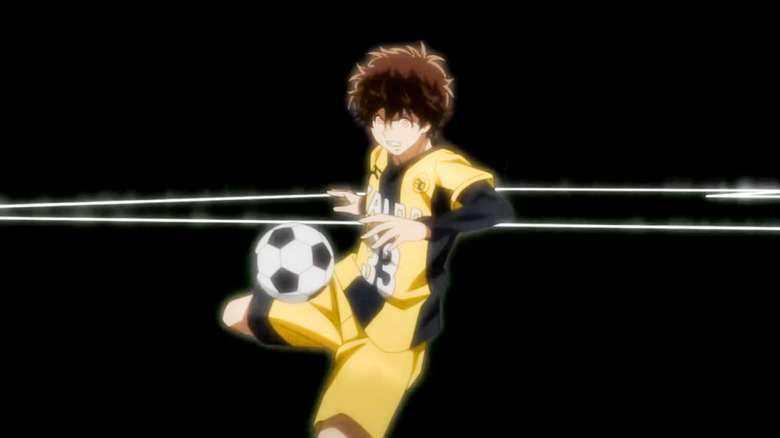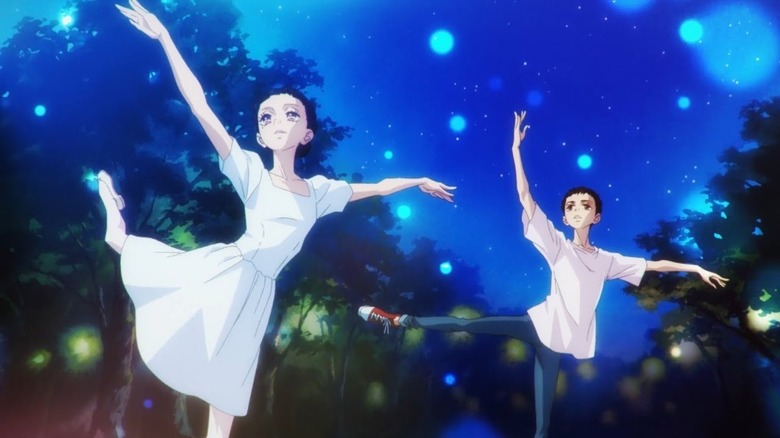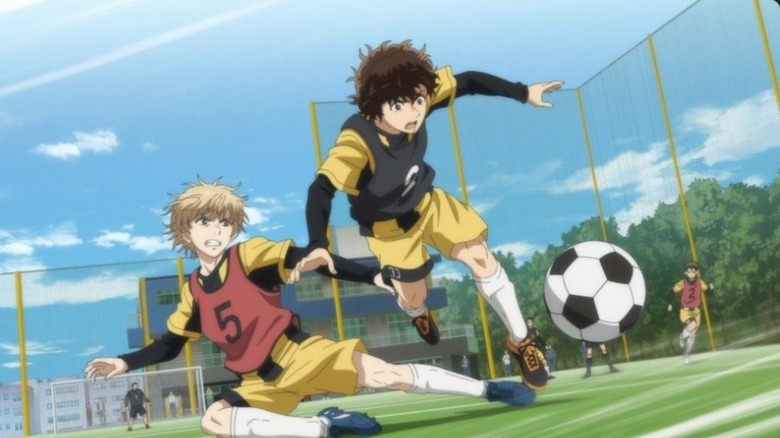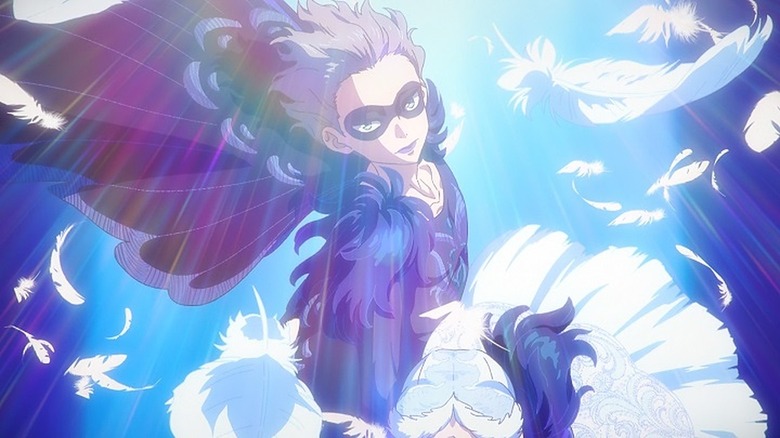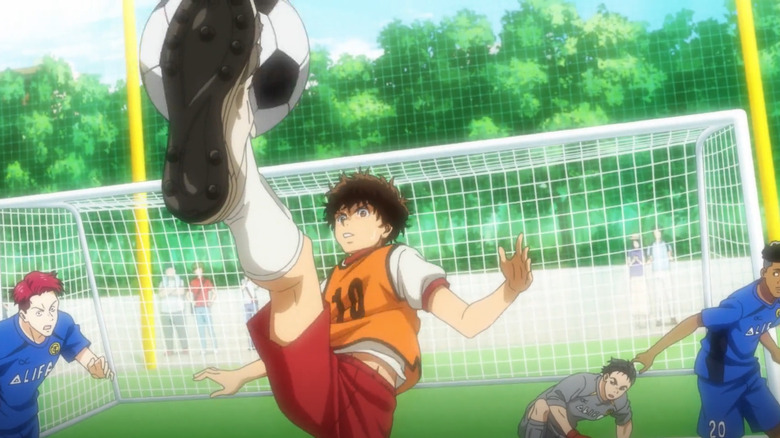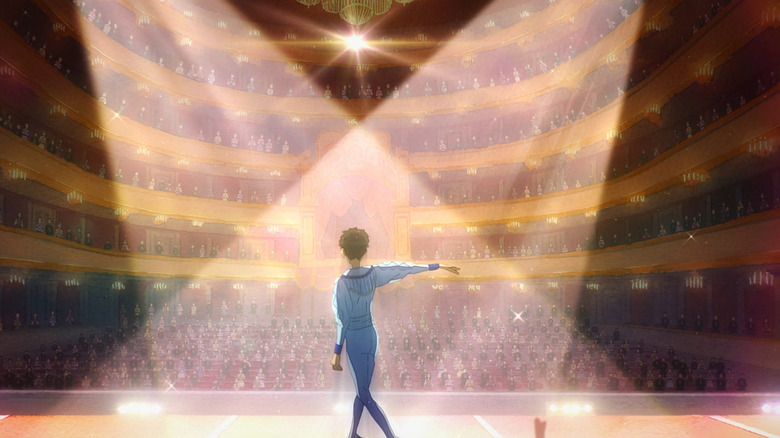Aoashi And Dance Dance Danseur Show A Different Side Of Sports Anime
(Welcome to Ani-time Ani-where, a regular column dedicated to helping the uninitiated understand and appreciate the world of anime.)
We are mixing things up this month! The spring 2022 season gave us plenty of great anime shows, including some phenomenal rom-coms, but what was most surprising was how it offered two vastly different, yet equally refreshing takes on the sports anime genre: "Aoashi" and "Dance Dance Danseur."
"Aoashi" follows a young boy from rural Japan who dreams of making it big as a professional football (fine, "soccer") player and believes he is the reincarnation of Cristiano Ronaldo (even if he is still alive). From there, the show explores his career path as he tries to get into one of the best soccer clubs in Tokyo and learns what it means to be a pro player.
Meanwhile, "Dance Dance Danseur" follows a young boy who decides to finally follow his dreams of joining a ballet studio after years of hiding his passion and doing more "masculine" sports. What starts as an animated version of "Billy Elliot" evolves into a nuanced, poignant story about the classism and eurocentrism ingrained in the ballet world and what it takes to make it in that world.
With that in mind, here's why you need to catch up on both of these anime, and what they have to say about the world of sports
What makes them great
Both shows have all the key ingredients of a sports anime, which starts with memorable and likable characters. Ashito Aoi and Junpei Murao share traits with iconic sports anime characters like Shōyō Hinata or Ippo Makunouchi: they are hot-headed, they are naturally gifted, and they think they are the very best like no one ever was.
Yet the shows find clever workarounds to having the characters still train and learn to be better despite their natural talent. Because they come from a different upbringing than most of their peers, their skills and knowledge are warped by what they could teach themselves, so their grasp of the basics is rather poor. The first seasons of "Aoashi" and "Dance Dance Danseur" then mostly focus on Aoi and Junpei learning basic techniques, which serves to teach the audience the rules and skills required for soccer and ballet.
Even though the shows don't focus on team dynamics like something like "Haikyuu" does, their supporting cast is still fantastic — from the teammates/peers to rivals, to family members. Seeing Aoi's mom make sacrifices so her son can fulfill his dream, and then struggle to communicate her support with words makes for a tearjerking and warming moment, while the story of Junpei's rival, Luau, and his childhood abuse is absolutely heartbreaking.
Capturing the real deal
Of course, characters are only a part of it; you also need animation that can capture the excitement of the real deal and communicate to audiences not familiar with the sports. Luckily, these shows absolutely deliver.
"Aoashi" is from the same studio that gave us "Haikyuu," so expect plenty of hype moments of pure soccer bliss. If you, like me, grew up watching reruns of "Captain Tsubasa," then the upgrade is incredibly noticeable. And for "Dance Dance Danseur," Studio MAPPA, who previously worked on "Yuri!!! On ICE" uses motion capture to better capture the nuances of ballet and its intricate motions. For an art that is as much about movement as it is about expression through silhouette and posing, pairing it with the medium of animation is a match made in heaven.
Just looking pretty isn't enough for a sports anime, because at their best they also teach you more about the sport than any real-life match or documentary could. We've seen soccer anime in the past, a lot of good ones, even, but "Aoashi" brings a level of attention to the technical aspect of the sport we don't normally see, showing the tactics, the non-verbal communication and planning that goes into making killer plays.
Though the show does feature your typical sports anime "power," that the power is the real ability of "scanning" that makes players like Xavi or Iniesta the best in the world is proof that "Aoashi" deeply cares about soccer. In "Dance Dance Danseur," the care given to poses, to movements, to rhythm and timing will have you stressing out as much as the "not my tempo" scene in "Whiplash," then dropping your jaw the first time we see Junpei perform "Swan Lake."
What they add to the conversation
"Dance Dance Danseur," and "Aoashi" share elements with plenty of other great sports anime, but they still manage to stand out and offer something fresh to the genre. This is because the two anime focus not just on getting to the regionals or on becoming the best, but on the hardships of being an outsider trying to make it in a world of privilege that is made to exclude those who aren't born under a specific set of circumstances.
In the case of Junpei, he is constantly compared to a monkey due to his clumsy movements, but also because he is "uncivilized" compared to his peers, all of whom come from wealth and are classically trained compared to Junpei's mostly self-taught upbringing. There are rich old ladies that dictate what does and doesn't constitute as "dancing," and a guy who suddenly starts speaking Russian for no reason other than proving himself superior. "Dance Dance Danseur" is at its best when it interrogates the classism inherent to ballet, and the gatekeeping that keeps that classism alive today.
The economics of trying to turn pro
Similarly, "Aoashi" shows something we rarely ever get in sports anime — or really, most movies or shows about sports — the economics of trying to turn pro. You see, Aoi comes from a small rural town, but needs to move to Tokyo if he wants to join a youth club with the hopes of maybe making it to a professional club once he turns 18. The fact that his family can barely afford life and have to make so many sacrifices for Aoi hits like a ton of bricks, especially when we see someone make fun of him because his shoes are worn off, and when he talks about wanting to turn pro only so he can help out his mom.
Even when he makes it to the team, Aoi faces gatekeeping and discrimination from his teammates. "Aoashi" shines a light on the different ways kids join a club, from those who were brought up on the "junior youth" team (like the famous Spanish "Canteras"), those who had to pass the tryouts, and even a guy who was personally scouted to join. The idea of gatekeeping and who should get to join a professional club, and of course the different levels of preparation and training each player gets, makes for compelling character drama. We're just getting started, but that the "Aoashi" manga even tackles racism in soccer is promising that this franchise is more than just a rose-colored inspirational story.
Why non-anime fans should check it out
Suppose you want a new sports anime to get hyped about, where the matches (or dance recitals) have a lot of hype and anticipation, where the characters feel relatable, memorable, and likable for the most part. But you also want a sports anime that tries to explore a different side of sports than we normally see in anime, and exposes the difficulty of trying to make it in the sports world when you don't have the "right" upbringing and status. If that's you, then you better make "Dance Dance Danseur" and "Aoshi" your next binge.
Watch this if you like: "Haikyuu," "Yuri!!! On ICE," "Captain Tsubasa," "Hajime no Ippo"
"Aoashi" and "Dance Dance Danseur" are streaming on Crunchyroll.
